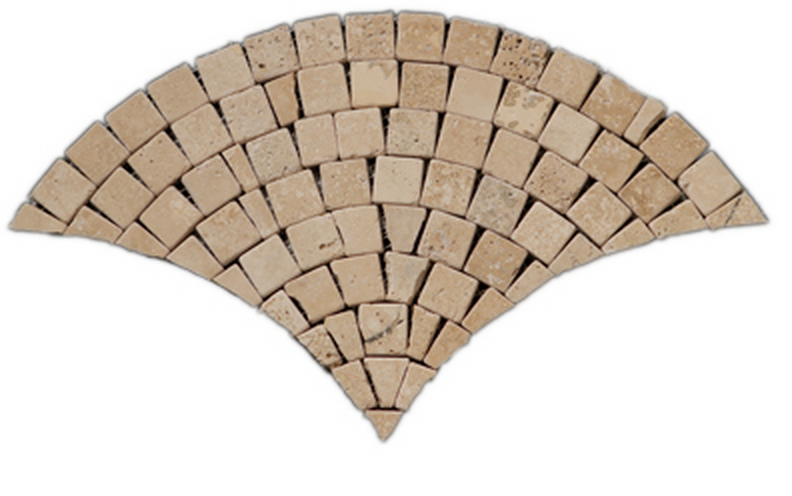
Tumbled Stone Tips
Tumbled stone Tips and uses has been on the tips of the tongues of design professionals and homeowners alike for quite some time. Go into any stone and tile showroom, and you will find at least a few examples and perhaps a vast array of vignettes to consider. So here are a few tips on tumbled stone.
Let’s start with the appearance of tumbled stone. This type of material will generally look to be somewhat “worn.” It can also be called “soft” and “rustic” in the visual that it presents. Many potential clients will see a tumbled stone as appearing to be “reclaimed.”
Interestingly enough, the process used to produce this product is quite often as simple as it sounds. In other words, the smaller stone pieces such as 4”x4” are tumbled inside large drums. This kind of product could be a problem with bigger pieces such as 12”x12” and larger since the breakage might be extraordinary. Therefore, larger pieces are chipped and worked by special machines to achieve the tumbled condition.

More about Tumbled stone tips. Depending on who you speak with, softer marbles and travertines may make themselves more manageable to work with than harder, more dense material such as granite. But, once again, opinions can differ here. Nevertheless, as a rule of thumb, your selection range will be large.
The terms “chalky,” “dusty,” and “dirty” may all apply initially. If not, it is easy enough to use light sealers and minimal maintenance plans to make for a cleaner and more delicate presentation.
A few more tumbled stone tips for your consideration. StoneTileDepot has a fine selection, and we want to help you, so please contact us here, and thanks very much for reading!
What are tumbled stones used for?
Tumbled stone is the perfect floor covering in high traffic, difficult to maintain areas such as pool decks, patios, and walkways. Outside weather conditions demand a rustic surface. Tumbled stone is great for resistance to wear and tear and showing scratches on the surface. Outside cooking areas like bbq pits, outside stoves, pool, and spa area tiling, fireplace surrounds are ideal for this stone.
In addition, tumbled stone is made from broken, damaged, or scrap stones. For this reason, they are more economical and easy to use. Tumbled stone is considerably less expensive compared to regular polished or honed marble floors.
What is tumbled tile?
When factories use large pieces of marble or travertine tiles and slabs, they end up with a lot of broken tiles. These tiles, as well as less desirable parts, are cut into smaller tiles like 4×4 or 6×6 tiles. These tiles are then tumbled in big bins ( cement mixers were used the first time ) with tumbling agents ( harder, more abrasive pieces) and water. Depending on the hardness of the stone, pieces are tumbled for some time. For example, a soft limestone like Moleanos from Portugal will take one hour to tumble. Whereas, a hard beige marble-like Crema Marfil will take longer to tumble.
Original tumbled stone was done from thin tiles like 1cm thickness. However, this created too much breakage for the factories and sharp uneven edges. Due to great demand for this floor and wall covering materials, factories like Tureks started making them with thicker stones and then split them. This process provided a more rounded and even edged like our tumbled stone collection.
Jerusalem tumbled stone is one of the most popular types of this material. Jerusalem stone is perfect for tumbling.
How do you tell if a tumbled stone is real?
Real tumbled stone has an uneven surface and irregular edges. Different parts of the marble quarry have hard and soft spots and when these stones are tumbled, these different surfaces wear out unevenly. This makes the stone look like it has been around for centuries. Old cobblestone streets of Verona and Rome were the inspiration for this type of material.

At stonetiledepot.com. tumbled stone wholesale prices are very competitive due to the fact we import directly from the quarries.